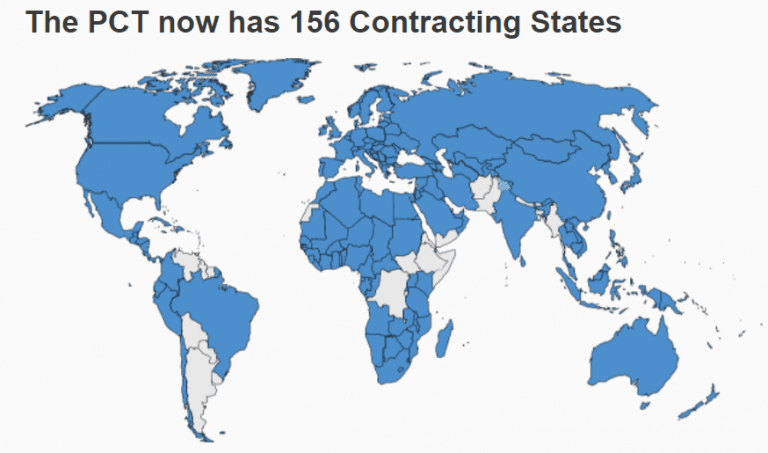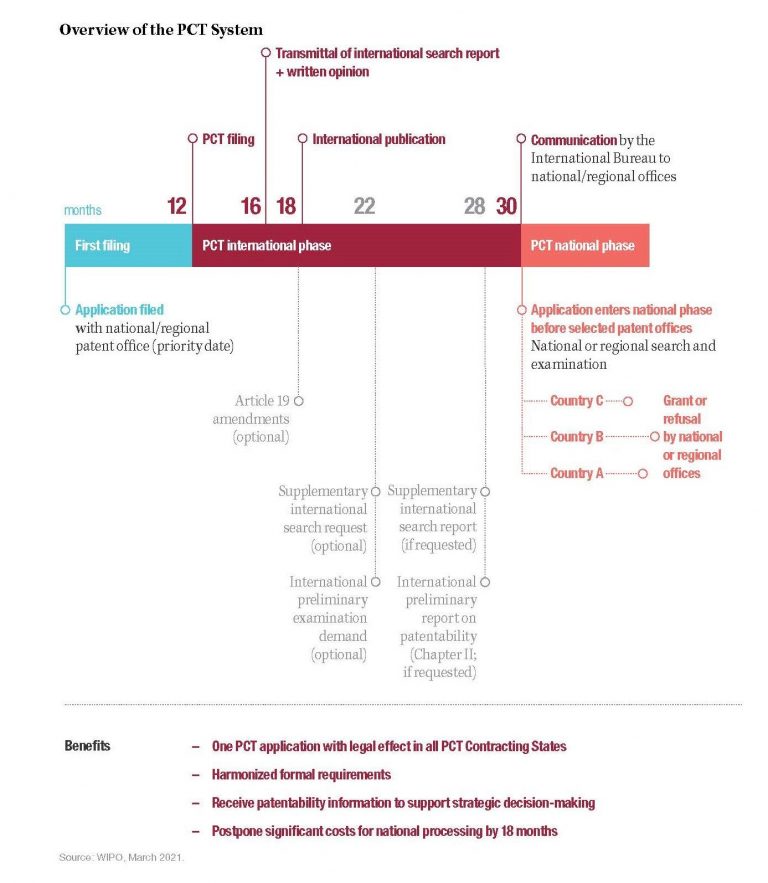Applicants who want to protect their innovation in more than one country usually start by filing a national or regional patent application with their local patent office.
Applicants must file an international patent application under the PCT with the RO (Regional Office) or the IB (International Bureau) – within 12 months after the filing date of the initial patent application (a time restriction stipulated by the Paris Convention), therefore initiating the international phase.
A PCT application can only be filed by a national or resident of a Patent Cooperation Treaty (PCT) Contracting State or Country. Only one applicant needs to comply with these criteria if multiple applicants are named in the PCT application.
The contents of the international patent application, as well as the international search report, are disclosed/published shortly after 18 months from the earliest priority date of the patent application.
If you wish to continue the application process, you must first determine the course you want to take:
A. Chapter I of the PCT – This is how it’s performed by default. If you choose to continue with Chapter I of the PCT, the application will automatically go to the national phase.
After receiving the findings of the international search report, you are entitled to a one-time revision of the claims under Article 19 of the Treaty. Any modifications must be filed with the International Bureau.
A written opinion as an international preliminary report on patentability will be sent to the applicant and PCT Member states where you are seeking patent protection. “Designated” states are the names given to these states/countries.
B. Chapter II of the PCT – File a PCT/IPEA/401 form (also known as a “demand”) with an International Preliminary Examining Authority (IPEA) if you like. If you are unsure about your possibilities of obtaining patent protection, you should consider filing a demand.
An additional patentability examination will be conducted by the IPEA (referred to as a written opinion of the IPEA). You may alter any portion of the specification in accordance with Article 34 of the PCT, and all amendments will be sent directly to the IPEA for analysis.
You and the states where you are seeking patent protection will receive a final report called the international preliminary report on patentability (IPRP). The IPRP provides a non-binding opinion on whether or not the invention is patentable.
Communication With National Offices
A copy of the published international application and the international search report will be requested from the International Bureau by the national or regional intellectual property offices of the designated states. It will also request the preliminary international report on patentability (Chapter I or Chapter II, as required).
You can now file a patent application with the national or regional intellectual property offices of the states you chose during the application procedure. You must also pay any appropriate fees and supply any necessary translations at each national or regional office.
It’s worth noting that during the national phase, any intellectual property office can use its own national or regional laws to evaluate patentability. Prior art (information that could enable a patent examiner to allege a fault in one or more of your claims) and any other conditions of patentability that are not required by the international application will be examined by the regional intellectual property offices.
Each PCT Member state has provided a full description of the prerequisites for entering their national phase. However, because practices and standards are subject to change, the only reliable sources of information on requirements are each state’s laws, rules, and regulations.








